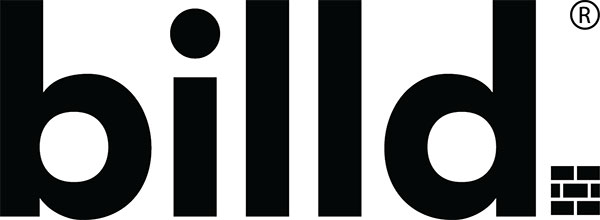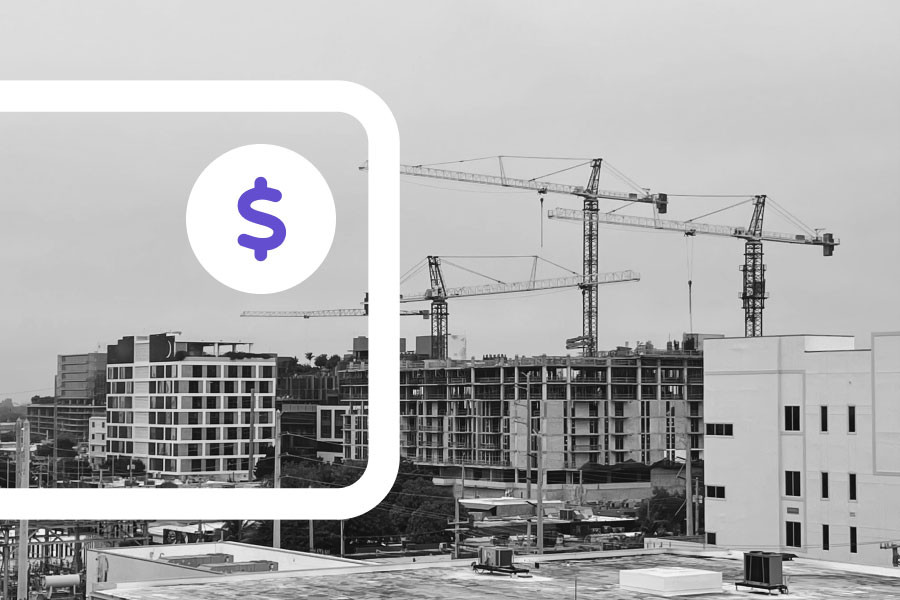Lines of credit (LOC) are crucial to a subcontractor’s financial health. With possible higher limits and lower interest, they can help subs protect their cash flow as they weather long, uncertain payment cycles. However, LOCs can be mismanaged or not used to a sub’s greatest benefit.
There are a number of ways to approach your line of credit in order to maximize its value and key considerations you should weigh beforehand. We decided to tap the financial expertise of the Billd team to see how they’ve seen successful subs approach using their line of credit.
(This article is not meant to serve as financial advice, and you should always consult with your accounting department and advisors when making decisions on how to use your line of credit or any other financial tool.)
Construction-specific considerations for LOCs
There are things subcontractors have to keep in mind that other LOC users may not have to, at least not to the same extent. We’ve compiled some of those considerations below:
Surety bonding companies – Maxing-out a line of credit or maintaining high utilization can have negative impacts for contractors that reach beyond the banking relationship.
Subcontractors have to be mindful of surety bonding companies when tapping their LOCs. These companies will evaluate your financial ratios, assets and liabilities.
LOCs factor into your liabilities, and you’ll want to show that you have available credit capacity on your LOC. The higher the balance, the higher your liability, which may reduce your bonding capacity. Banks and surety companies alike will eventually become concerned if they don’t feel you have sufficient cash flow to pay down your liability or if the line of credit balance does not revolve as the account receivables are paid.
Using financial tools like Billd help you access capital without touching your LOC. This keeps your LOC balance lower, minimizes LOC-specific interest, and protects a positive perception of your business with the surety company.
General Contractors – Bonding capacity is being reviewed by your GC during pre-qualification. Freedom in your business LOC allows for bond underwriters and pre-con teams to rank you higher, which allows you to work with larger and more organized GC’s. You are less risky to everyone when you have LOC freedom.
Not providing enough capital – Lines of credit from reputable banks often have lower interest rates and are industry-friendly, but banks typically don’t provide enough capital within that LOC. When they look at the receivable cycle in the construction industry, banks raise a red flag due to length, concentration, and unpredictability. This is why subs should expand their financial toolkit with partners who get construction companies, and who can provide larger, more flexible LOC alternatives, like material financing and pay app advance.
Types of purchases to use your line of credit for
Most subs use their LOC as an extension of their cash flow, using it to pay for anything and everything to float until payments come in. While this is understandable, it’s not necessarily best practice. It may help to develop internal guidelines around what kinds of purchases you place on your LOC.
Shorter term expenses – We recommend focusing on shorter-term expenses that can be repaid by the end of month. Otherwise, you risk maxing out your LOC, which limits your capital funds and may prevent future credit limit increases. If you have to put a longer-term expense on your LOC, make sure you have a structured plan to pay it down or can move to a term loan with a set payoff date.
Keep in mind, that low monthly rate really adds up when it takes months to years to pay down your line. Too many small businesses (construction and otherwise) have exceeded their line of credit capacity without an ability or plan to pay it down.
On the other hand, amortizing withdrawals from your LOC within your project timeline will strengthen your banking relationships. This is because banks operate on consistent deposits and rank your credit capacity on your borrowing base for the next 60 days.
One sub we spoke to suggested that it might be beneficial to limit your LOC to fixed operational expenses, like CapEX, salaried payroll or overhead. Variable expenses, like materials or hourly payroll, are less predictable and in turn riskier.
Emergency expenses – Billd CEO Chris Doyle is an advocate for preserving your line of credit capacity for emergency expenses. Why pull from your safety net when there are other financial options to assist you in managing your cash flow and helping to grow your business responsibly?
Based on years of industry experience, Chris recommends subs avoid putting material expenses on their line of credit, as these are often big ticket purchases that can reduce capacity and may keep you at high utilization while waiting for your pay application to get approved. With the average pay app taking 74 days to pay out, you might be limiting your ability to respond to emergencies or hot opportunities while you wait.
When and how to negotiate new rates
The negotiation of a new rate for your line of credit depends on the type of line you’ve been issued:
- For variable rate LOCs – The rate will rise and fall depending on the benchmark interest rate. These are tougher to negotiate, because they’re typically low-interest already.
- For fixed-rate LOCs – It makes sense to negotiate your rate at the end of your term (most banks will offer 1-year agreements, but some will go longer). However, a good relationship with your banker could allow you to make changes mid-term.
Keep the length of your term top of mind. In this high-interest-rate environment, shorter terms may be more beneficial so that you’re not locked-in to a high rate for a longer period of time. Keep in mind, though, that you also run the risk of getting that line called quicker.
How to approach covenant negotiation
Covenants will normally be formulated in the lender’s best interest. Standard covenants include making timely principal and interest payments, and maintaining the assets that secure the debt (if applicable). If additional covenants are present, be sure to scrutinize and determine if these are reasonable.
If you think there are unreasonable covenants, the Billd team recommends redlining or negotiating with the lender, if they’re willing. If they’re not willing to make sensible accommodations, the sub should walk away and look elsewhere if they’re truly not comfortable with certain points.
How to increase your line of credit
If you can show a material change in your business, like higher revenue or receivables, and maintain good standing with your LOC, it will help you get negotiations on the right foot. Banks are interested in collateral, so a higher limit may come with requests to pledge assets (CRE). If you have material assets and are comfortable with the lender taking the title, you’ll have a much easier time increasing your line of credit.
How the line of credit approval process differs from the Billd approval process
Long approval timelines – The approval process is longer with a bank, whereas Billd can typically approve funds within 24 hours. Many subs will have to present financial audits and a variety of statements to apply for a standard bank LOC or an increase. The process is typically lengthy and detailed.
When subs apply for LOCs, they usually have to provide audited financials, with the bank scrutinizing any credit sources they are using, liens/judgments, tax obligations, profits/losses, etc. If the bank is taking collateral, the title process can add additional time and speed bumps. Subs have shared with us how they’ll be in an underwriting period that spans weeks or months, with long waiting periods between updates. By contrast, Billd is communicative throughout every step of the application process.
Collateral – Large LOCs are typically secured by assets like CRE and CDs. Billd utilizes project-based underwriting to advance you money to assist in bridging the gap between your Account Payables and Account Receivables. Billd is also designed to get subcontractors paid by leveraging mechanics liens on our material financing product. Then, like credit card companies and LOCs, we use personal guarantees to ensure payment, but only as a last resort.
Barriers to maintenance – All banks require you to provide financial statements just to keep your LOC open. These check-ins include time-intensive monthly reviews and costly annual audits that are reviewed by a CPA. While you of course have to maintain good standing on your account, Billd doesn’t make you jump through hoops like that to access the financial tools we already approved you for.
Why you should complement your line of credit with Billd
Subcontractors are typically undercapitalized by banks and have to turn to products that conform to 30-day receivable cycles. Billd’s terms, by contrast, are tailored to the construction industry’s receivable cycle, and offer enough sustainable working capital to ensure an LOC can be used as intended.
By adding Billd to your financial toolbox, it could protect your standing with bonding companies, help you reserve LOCs for when you truly need them, and maintain the integrity of your cash flow. Get started today.

Billd
Billd is the largest financial solutions company in the US built specifically for commercial subcontractors. With Billd’s Material Financing and Pay App Advance products, you can get the financial support you need for any project and plan for your business on your terms.
